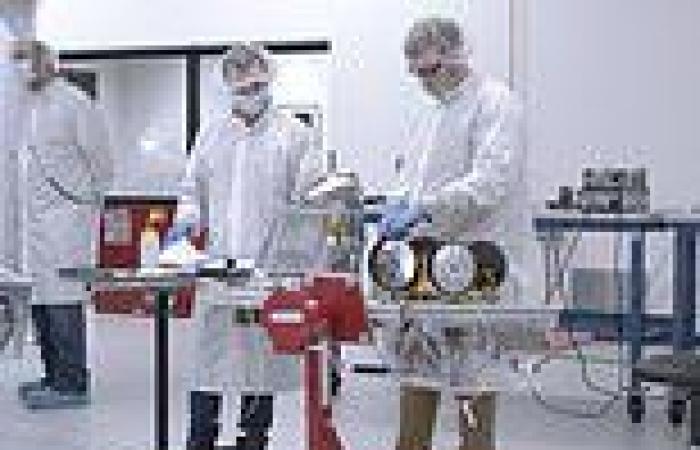A shoebox-sized robot named Iris is among the final two vying for the chance to become the first US spacecraft to land on the moon in 50 years.
NASA has been sending rovers to the surface of Mars for decades, with two, Perseverance and Curiosity, currently operating and sending back photographs.
However, the US-based space agency hasn't sent a vehicle to explore the surface of the moon since the last Apollo landing in 1972 - 50 years ago this year.
Two contractors funded by NASA have vehicles that could launch this year - including Houston-based Intuitive Machines, and Pittsburgh-based Astrobotic.
With contracts worth more than $70 million each, the firms could launch for the moon this year on a mixture of SpaceX Falcon 9 and United Launch Alliance rockets.
They are part of the NASA Commercial Lunar Payload service, that employs private firms to create service missions on the surface of the moon.

A shoebox-sized robot named Iris is among the final two vying for the chance to become the first US spacecraft to land on the moon in 50 years

Two contractors funded by NASA have vehicles that could launch this year - including Houston-based Intuitive Machines, and Pittsburgh-based Astrobotic (pictured)
One of those rovers, named Iris, is already attached the the Peregrine lander by Astrobotic, that could be sent to the moon in the first half of the year.
In contrast, Intuitive Systems is testing the Nova-C lunar lander that will carry a small 'spider-like' rover from the London-based Spacebit Technologies.
Intuitive has a $77 million contract from NASA for its IM-1 mission, and Astrobotic's Peregrine lander has a $79.5 million NASA contract for Peregrine Mission 1.
They are both designed to investigate landing sites and resources for the Artemis crewed missions, scheduled to operate from 2025 with the first woman and next man to step foot on the lunar surface.
'The first priority is, I hope it's successful - that is the number one priority above all else,' Astrobotic CEO John Thornton said in an interview with UPI.
'We have a good shot at being first, but that's not the driver, that's not the big deal - success is most important.'
The firm has used miniaturisation technologies, similar to those which pack ever increasing power into a smartphone every year, to create a relatively tiny vehicle that can drive across the moon's surface.
Iris is a CubeRover class of vehicles, inspired by the small






